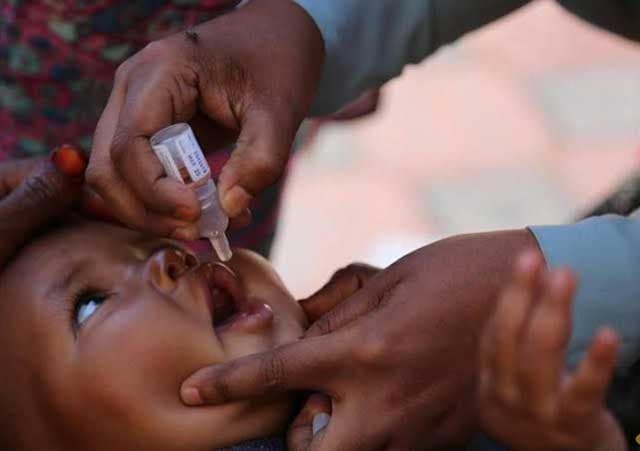We're loading the full news article for you. This includes the article content, images, author information, and related articles.
Despite eradicating wild polio, Kenya confronts outbreaks of a vaccine-derived strain, prompting massive cross-border vaccination campaigns and a strategic shift in immunisation to protect millions of children.

At the age of five, Nick Mc'ondwat was struck down by polio in his rural Homa Bay home, a preventable disease that left him with a permanent disability. “When I was born, my parents lived in a rural part of Homa Bay, making access to the vaccine challenging,” he recounted on Friday, October 24, 2025, noting his younger siblings were all vaccinated. [3, 12] His personal battle with the disease and the profound stigma that followed inspired him to establish an advocacy organisation in 1998, becoming a leading champion in the fight to ensure no other child suffers the same fate. [3]
Today, Kenya stands on the precipice of total polio eradication. The country has not recorded a case of indigenous wild poliovirus in years and the wild variants type 2 and 3 have been globally eradicated. [3, 12] However, the nation faces a new, more insidious threat: outbreaks of circulating vaccine-derived poliovirus type 2 (cVDPV2). This strain emerges in rare instances in communities with low immunisation rates, where the weakened live virus from the oral polio vaccine (OPV) can mutate and spread. [2, 10]
Throughout 2024 and 2025, Kenya’s public health authorities have been on high alert. As of late 2024, at least six instances of polioviruses were detected in the country. [2, 4] Detections and confirmed cases have been reported in Nairobi, Garissa, and Turkana counties, often linked to refugee camps and areas with significant cross-border movement. [7, 9] An International Federation of Red Cross and Red Crescent Societies (IFRC) report dated August 1, 2025, noted that the outbreak occurred in a high-risk setting characterized by low immunization coverage and population displacement. [7] Dr. Christine Chege, a pediatric infectious disease specialist, explained in a December 2024 interview that poor sanitation in areas like urban slums can allow the excreted vaccine virus to mutate and infect unvaccinated children. [2]
This resurgence has prompted one of the most significant public health responses in the region. The Kenyan Ministry of Health, in collaboration with the World Health Organization (WHO), UNICEF, and the Global Polio Eradication Initiative (GPEI), has launched a series of rapid, large-scale vaccination campaigns. [4, 5, 18] In a remarkable display of regional cooperation, Kenya and Uganda conducted a synchronized cross-border polio campaign between Tuesday, October 3 and Friday, October 6, 2024, successfully vaccinating over 6.5 million children. [4] Charles Korir, the GPEI Coordinator in Kenya, confirmed a second synchronized round was planned for November 2024 to close immunisation gaps. [4] Furthermore, a WHO report from the second quarter of 2025 highlighted a synchronised effort between Kenya, Ethiopia, and Somalia that vaccinated over 18 million children between April and June 2025. [3]
The success of these campaigns hinges on the tireless work of advocates like Mc'ondwat and the guidance of scientific experts. Prof. Walter Jaoko, Director of the Kenya Aids Vaccine Initiative (KAVI) Institute of Clinical Research, has been a prominent voice, emphasizing that the tools to eliminate the disease are highly efficient. [3, 12] “We no longer need research on polio because the tools that we have are so efficient; it is just a matter of applying them and we will be able to eliminate the viral disease,” Prof. Jaoko stated. [3, 12] He also highlighted the crucial role of partners like Rotary International, which has contributed over $2.9 billion to the global eradication effort since 1988. [3]
Despite high national vaccine uptake, significant hurdles remain in Kenya's last mile. Dr. Chege identified low immunisation coverage in some counties—as low as 50%—as a primary challenge, particularly in northern regions and urban informal settlements. [2] Another major barrier is vaccine hesitancy, often fueled by misinformation linking the polio vaccine to family planning. [2, 3] The porous nature of Kenya's borders with countries like Somalia, coupled with conflict and climate-induced migration, creates a constant risk of virus importation and spread. [4, 21]
In response to the threat of vaccine-derived strains, Kenya is making a crucial strategic shift in its immunisation policy. On Thursday, October 23, 2025, Dr. Patrick Amoth, the Director General for Health, confirmed that Kenya will transition from the Oral Polio Vaccine (OPV) to the Inactivated Polio Vaccine (IPV) for routine immunisations. [10] The IPV, administered via injection, contains a killed virus and carries no risk of creating vaccine-derived poliovirus. [10] Dr. Amoth clarified that the risk of paralysis from continued OPV use is now considered greater than importing wild poliovirus, aligning Kenya with the global endgame strategy. [10] OPV will, however, continue to be used for rapid outbreak responses. [10]
With the world aiming to eradicate polio by 2029, Kenya's efforts are critical. The nation's robust surveillance systems, including environmental monitoring of sewage, and its commitment to regional collaboration are vital components of Africa's push to become completely polio-free. [3, 12] As Prof. Jaoko warned, “As long as the virus exists anywhere, the rest of the world is at risk of getting a resurgence.” [3, 12] The final push requires not just vaccines, but sustained community engagement, political will, and the unwavering dedication of polio champions like Nick Mc'ondwat.
Keep the conversation in one place—threads here stay linked to the story and in the forums.
Other hot threads
E-sports and Gaming Community in Kenya
Active 6 months ago
Popular Recreational Activities Across Counties
Active 6 months ago
The Role of Technology in Modern Agriculture (AgriTech)
Active 6 months ago
Investing in Youth Sports Development Programs
Active 6 months ago